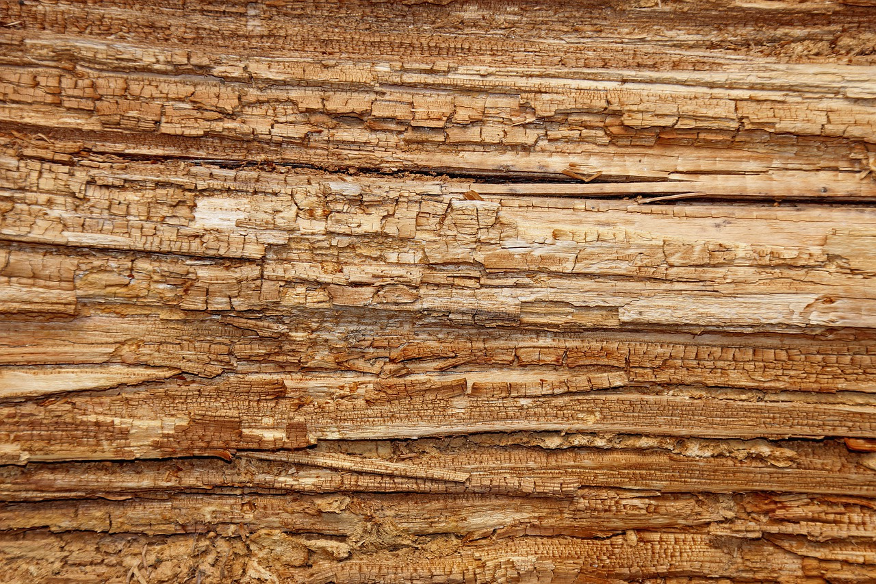Dry rot is a dangerous fungus that can cause severe and potentially dangerous damage to the structure of your home. It is difficult (although far from impossible) to treat, and dry rot treatments can be disruptive and expensive if it has spread throughout the building.
For homeowners looking to sell their house or for buyers looking to make a new purchase, the presence of dry rot can be a huge inconvenience. It can lower the value of your home and prove costly, so buyers need to have a thorough timber survey carried out before they sign any contracts.
Dealing with dry rot effectively is essential, so this article offers advice on buying or selling a house with dry rot.
What is dry rot and why is it so dangerous?
Dry rot is a form of wood decay caused by fungal spores that are present in the atmosphere. These fungal spores need the right conditions to survive, and they require the presence of moisture and suitable timbers. Given the right environmental conditions, dry rot can quickly spread through the timber in your home.
Dry rot is dangerous because as it infects timbers, causing them to weaken, and potentially collapse. If left unchecked, it can cause severe structural damage to a home, particularly if it infects important timbers in the foundations or walls of a building. In severe cases, dry rot can cause total collapse, and that can cause life-threatening injuries to anyone who happens to be in the building!
Although similar to wet rot, dry rot it considered to be much more dangerous. It requires less moisture than wet rot to thrive, which is why it can prove to be more contagious.
Dry rot warning signs to look out for in your home
There are lots of warning signs that homeowners or prospective buyers can look out for if they are worried about dry rot. Catching it early is essential, as it allows you to implement a fix before it gets out of control or becomes too costly.
If you notice any of the following signs, it’s important to call in a professional surveyor who can identify the type of fungal infection in the timber and the extent of the spread throughout your home:
- Pungent, musty smells
- Soft, spongy timbers
- White-grey fungal growths
- Discolouration of wood
- Bumpy or cracked wood
- Cracked or peeling paintwork
You can find dry rot in walls, doorframes, window frames, floorboards and anywhere else in the house where timbers are present. It’s often hidden out of sight however and can be difficult to find, which is yet another reason to bring in a professional.
How can dry rot affect the value of my house?
Dry rot is a serious problem if you’re trying to sell your home. While the buyer might not notice that it’s present, prospective homeowners should carry out a pre-purchase damp and timber survey, which identifies if the building has dry rot.
If this happens, the owner of the home is expected to provide a fix or lower the price of the house to account for the extra work the buyer will need to carry out after the sale. Dry rot can therefore lower the value of your home, as can being located in an area that’s known to have outbreaks of dry rot.
For homeowners looking to sell their property, it’s often best to identify if dry rot is in the timbers before putting the house on the market. This gives them the chance to have an accurate valuation and to fix the dry rot problem, which will lead to a higher value sale.
What should you do if the home you wish to purchase has dry rot?
If you’re on the other side of the sale and are looking to purchase a property, it’s imperative that you have a damp and timber report organised by a professional damp survey specialist. When you inspect the home, you might notice tell-tale signs of dry rot, but often it can be hidden away and requires an extensive investigation to find.
If the survey highlights the potential for dry rot or identifies an existing dry rot infection in the timbers of the home, you are well within your rights to cancel the sale until a solution has been implemented by the current owner.
You can negotiate a better price for the house, as you’ll need to carry out work after you purchase it. If the extent of the dry rot damage is unclear, it is better to ask the home seller to fix the problem before you finalise the sale. This is a good move for the home buyer, as dry rot costs can add up and there may be unexpected charges if new outbreaks are found or larger restructuring is needed to make the property safe.
Ultimately, dry rot can be very dangerous in a home, so it is in the best interests of a home buyer to ensure that they are satisfied with the situation before they make their purchase.



 Bitcoin
Bitcoin  Ethereum
Ethereum  XRP
XRP  Tether
Tether  Solana
Solana  USDC
USDC  TRON
TRON  Lido Staked Ether
Lido Staked Ether  Cardano
Cardano  Avalanche
Avalanche  Toncoin
Toncoin